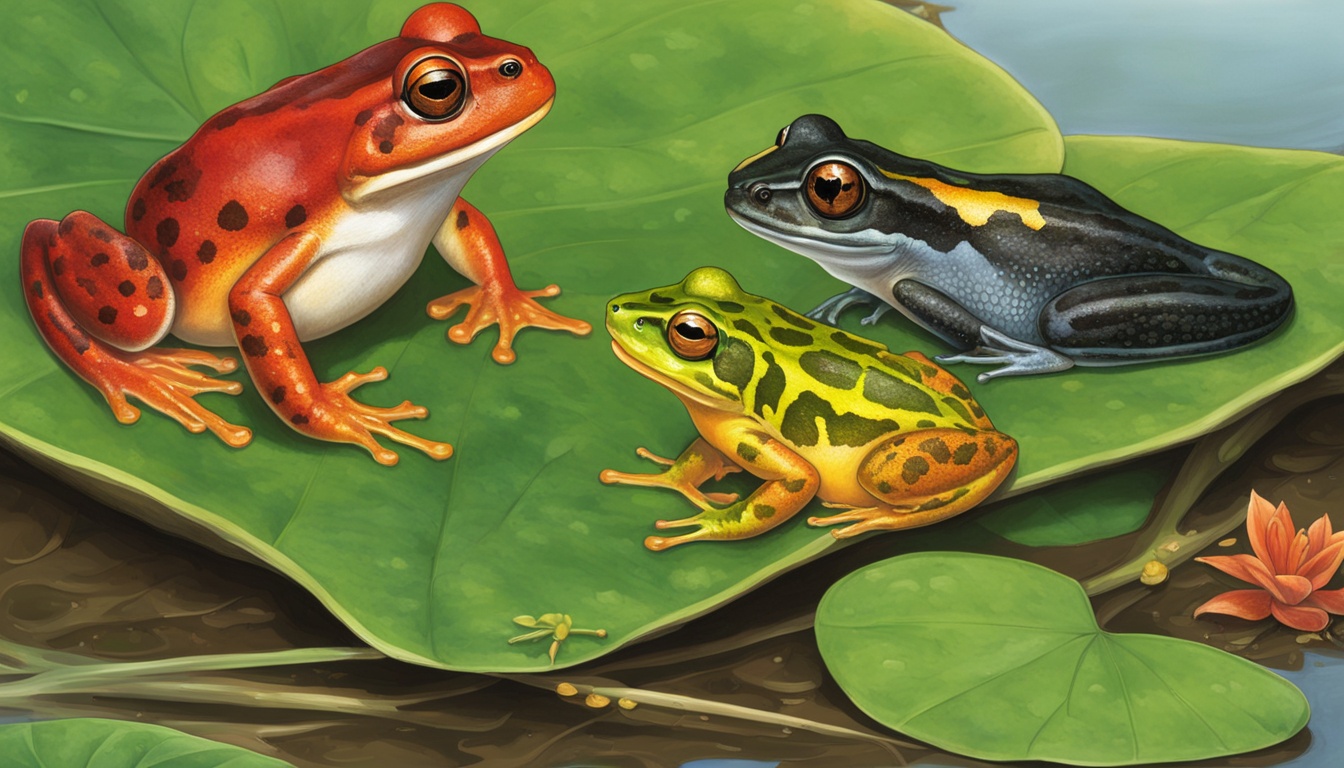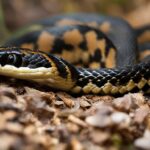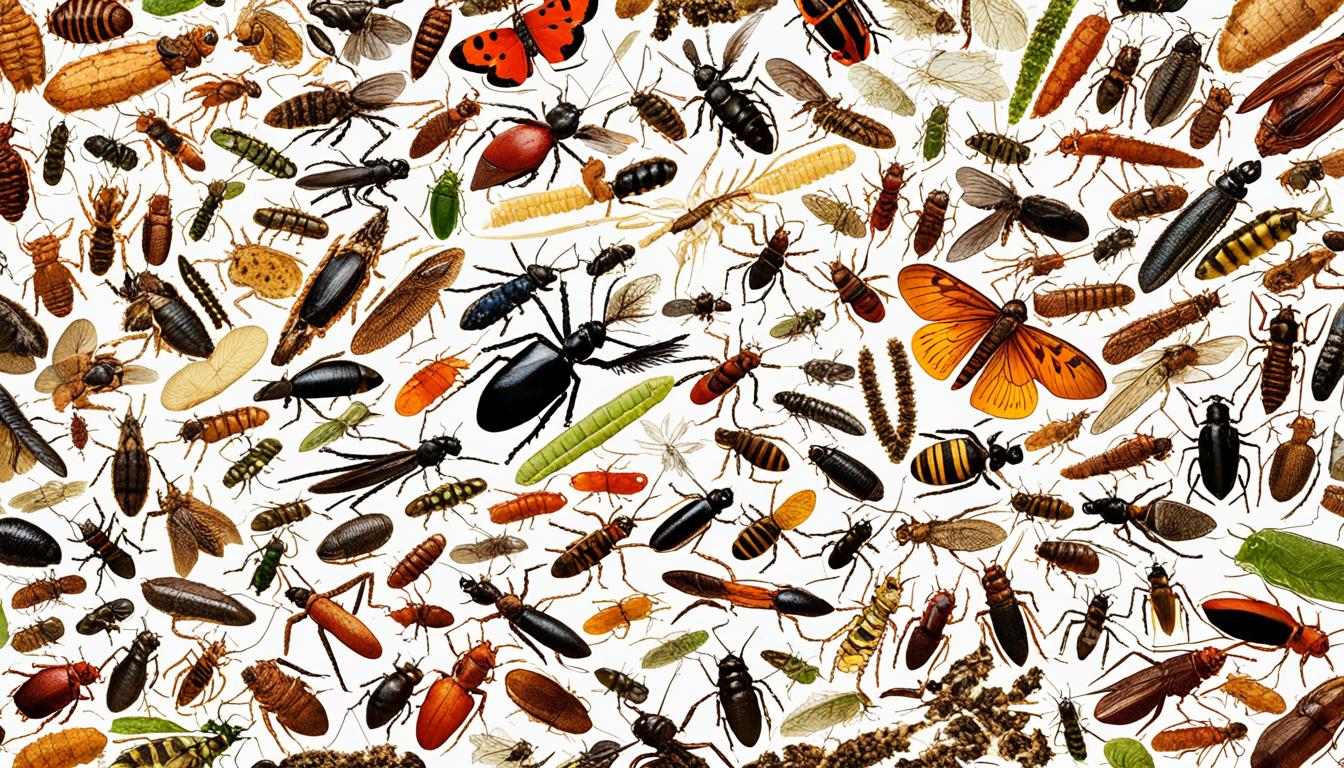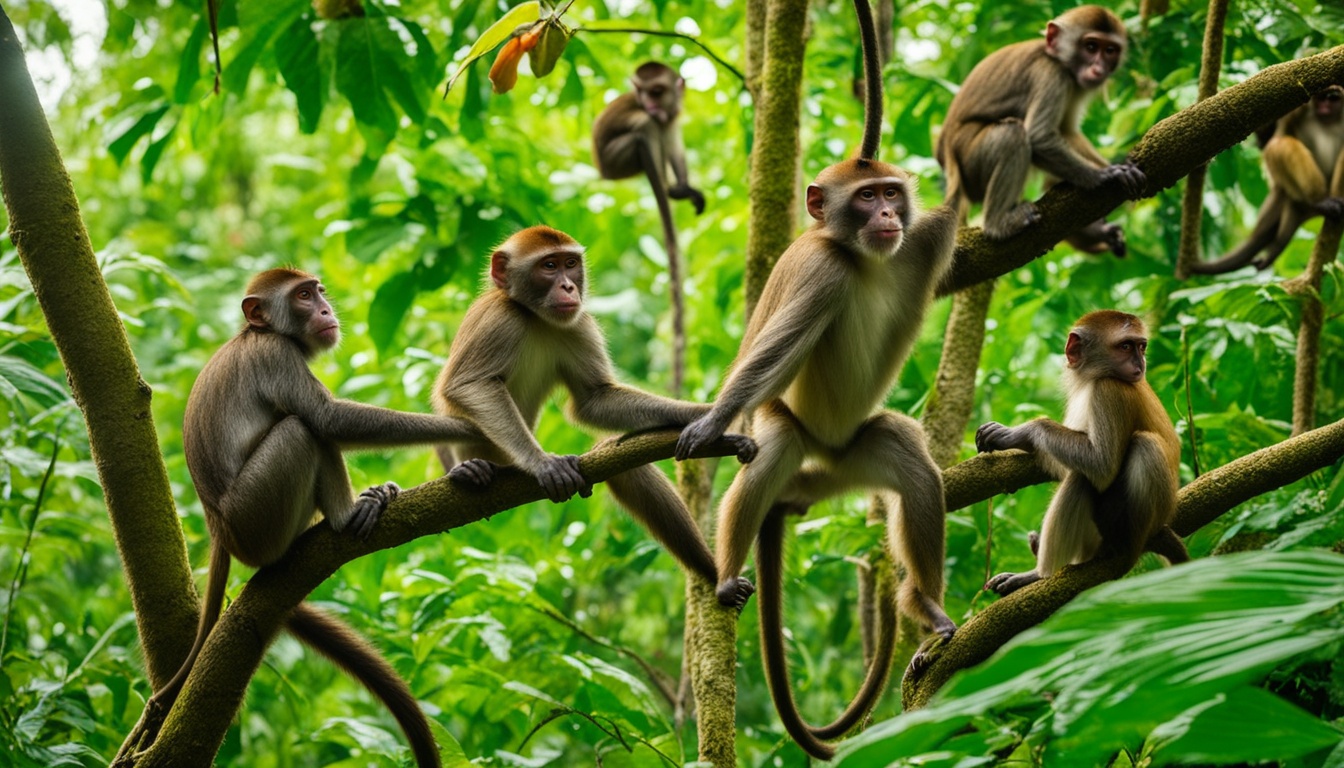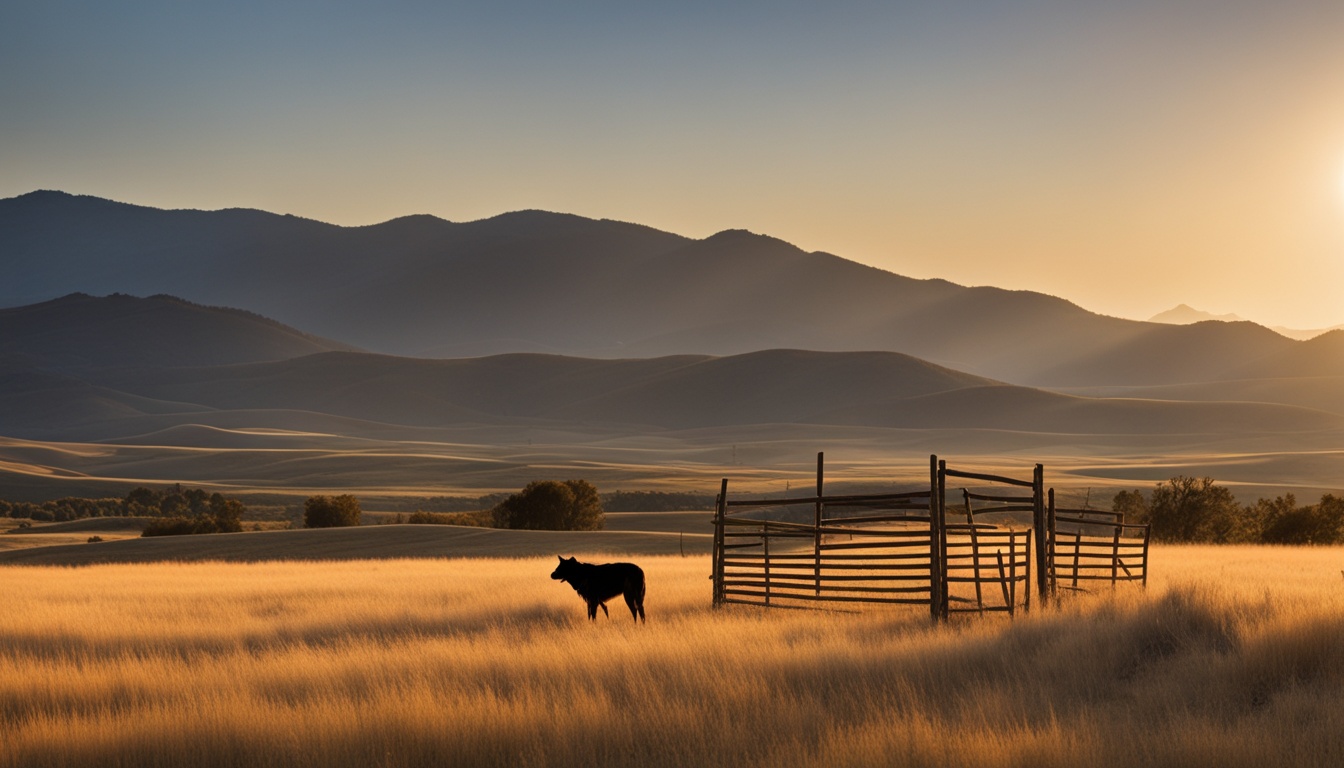Have you ever wondered how many amphibians live in the USA?
The USA is full of over 300 species of amphibians. You can find frogs, toads, salamanders, newts, and more. They live in various places, from cool forests to warm wetlands. Also, some kinds are only found in the USA. This shows their unique place in the world’s nature.
Knowing about these animals can make you see nature differently. You’ll learn that each one is important for our environment.
Introduction to Amphibians in the USA
Amphibians are key in the US ecosystems, from the Appalachian Mountains to Florida. Each area in the US has its own unique type of amphibians. Their amphibian diversity in the US shows how well they adapted to their homes.
These creatures help show when the environment changes. They also make America’s landscapes even more beautiful. The habitats of American amphibians vary a lot. They all support different types of amphibians, from forests to wetlands.
This diversity is crucial to the big picture of nature. It includes species living in forests and wetlands. Their variety shows the amazing complexity of US wildlife.
- Bioindicator status: Amphibians are sensitive to environmental changes, making them excellent indicators of ecosystem health.
- Natural beauty: Amphibians add to the aesthetic appeal of various American landscapes, from mountain streams to coastal marshes.
As you learn more about amphibians, you’ll see their wide range in form and function. The way they fit into their homes is vital for biodiversity and ecological health. Amphibian diversity in the US is worth studying to see their role and the importance of their homes.
Common Frogs in the USA
The United States has many common frog species, adding to its diverse wildlife. These frogs live in all kinds of places, such as ponds, wetlands, forests, and prairies.
American Bullfrog
The American Bullfrog is very famous because it’s big and loud. It can grow up to 8 inches. During mating season, males make a loud noise. They can be found in lakes, ponds, and marshes all over the country.
American Green Tree Frog
The American Green Tree Frog stands out for being colorful and loud. It’s the state frog of Georgia and Louisiana. Its green color and unique call ‘quonk-quonk’ have made it popular. These frogs like humid places and are usually seen on leaves near water.
American Spadefoot Toads
The American Spadefoot Toads are known for being able to dig and hide underground. They can live in dry places. They come out after heavy rains to mate. Their ability to survive in tough conditions shows how diverse USA frogs can be.
These frogs show us how adaptable and diverse American wildlife can be. They are vital for the health of their ecosystems by keeping them balanced.
Common Toads in the USA
Toads are widely seen across the United States. The many types of toads show how adaptable they are. Most American toads look tough and spend a lot of time on land. This ability lets them live in many places, from dry deserts to wetlands.
These American toad species help keep nature in balance by eating pests and being food for other animals. They have rough, bumpy skin and short legs, unlike frogs. These features help them live on land. The colors and shapes of toads help them hide from animals that might want to eat them.
In various places, like the East and the Fowler’s Toad, these creatures do well. They show they can live in wetlands and drier places too. Understanding the variety and special traits of toads helps us see how amazing they are. It also shows their crucial role in nature.
Types of Salamanders in the USA
The USA has many ecosystems that are perfect for a wide range of salamander species. These amphibians have special features. They help them live in places like fast streams or under the ground. America is home to many kinds of salamanders, showing how diverse they are here.
Hellbender
The Hellbender (Cryptobranchus alleganiensis) is among the biggest salamanders in the US. It lives in the east, where there are cool, fresh streams and rivers. This salamander is big, up to 29 inches, and has extra skin to breathe through. It needs clean water to survive, making water preservation key for its well-being.
Barton Springs Salamander
The Barton Springs Salamander (Eurycea sosorum) calls Barton Springs, Austin its home. It is small but important, living only in specific waterbodies. It lives in spring-fed pools and underground spots in the Barton Creek area. Protecting its water is crucial to keep this special salamander safe.
Common Mudpuppy
The Common Mudpuppy (Necturus maculosus) lives in water across the US East. Its gills look like feathery tufts. This mudpuppy is key in keeping water in balance. It eats bugs and sometimes is food for other animals. Protecting its varied water homes is vital.
Here’s a brief comparison of these three noteworthy salamander species:
| Species | Habitat | Key Characteristics |
|---|---|---|
| Hellbender | Eastern USA; cool, fast-flowing streams | Largest North American salamander, loose folds of skin for oxygen absorption |
| Barton Springs Salamander | Barton Springs, Texas; springs and underground streams | Endemic, highly specialized, reliant on clean, stable water sources |
| Common Mudpuppy | Eastern USA; lakes, rivers, streams | Respirates with external gills, fully aquatic lifestyle |
USA Newt Species
Newts add to the rich amphibian life in the United States. They have a unique life cycle that moves from land to water. Two special species are known for their unique features and where they live.
Eastern Newt
The Eastern Newt is famous in the eastern part of the country. You can find it in little ponds and streams. It’s known for its bright, spotted ‘eft’ stage. This is when it goes on land for a bit, then goes back to water. Its wide distribution shows how adaptable it is and why it’s important for the environment.
Rough-Skinned Newt
The Rough-Skinned Newt lives along the Pacific coast. It’s famous for having strong skin toxins. These toxins keep it safe from predators. They make the Rough-Skinned Newt an interesting study in biology. Its presence shows how diverse and fascinating the USA newt species are.
What Types of Amphibians Are Common in the USA?
The United States has many amphibians, showing the country’s natural variety. Some well-known types across the US are unique and abundant. Learning about these common American amphibians helps us see their roles in nature.
- Frogs: The American Bullfrog is large and sings loudly in swamps. The American Green Tree Frog is iconic in the south.
- Toads: The American Toad lives in different places, from dry to wet lands.
- Salamanders: There’s the big Hellbender and the tiny Barton Springs Salamander, which lives only in Texas.
- Newts: One type, the Eastern Newt, is found in ponds and streams in the east.
Common American amphibians play key roles in the country’s ecosystems. They help keep the environment healthy and diverse. Knowing about these wide-ranging amphibians shows us how they adapt and why they matter.
Amphiumas and Their Characteristics
Amphiumas, also known as ‘Congo eels’, are interesting American salamanders. They have long, eel-like bodies and tiny legs. These creatures come out at night and live in the southeast of the United States.
Amphiumas have small, nearly useless limbs. This shows they are meant for life in the water. They mostly hang out in slow waters like swamps and ponds.
Being active at night is a big part of who Amphiumas are. They find food after dark to avoid danger and keep cool. This behavior sets them apart in nature.
Amphiumas can also survive with very little oxygen. During dry times, they hide in the mud to sleep. This slows down their bodies until it’s wet again.
Here’s a table to compare Amphiumas with other salamanders in America:
| Characteristic | Amphiumas | Common Mudpuppy | Hellbender |
|---|---|---|---|
| Body Shape | Elongated, eel-like | Robust, lizard-like | Flattened, large-bodied |
| Limbs | Tiny, underdeveloped | Well-formed, fully functional | Short and strong |
| Habitat | Slow-moving waters, swamps | Lakes, rivers | Fast-flowing streams |
| Behavior | Nocturnal | Nocturnal | Nocturnal |
| Metabolic Adaptation | Can hibernate in mud | Fully aquatic, gills | Breathe through skin, folds |
Common USA Toad Characteristics
Identifying American toads is about noticing special traits and where they live. Take the Colorado River Toad and Fowler’s Toad for example. These toads look different and have unique roles in the environment.
Colorado River Toad
The famous Colorado River Toad is large and has powerful toxins. It lives mainly in the southwestern United States, in dry areas. Its poison, from glands behind its eyes, can scare away enemies.
Fowler’s Toad
Fowler’s Toad stands out with its loud calls and warts. It likes sandy places and is common in the east. These toads are great at digging and are often found near water when it’s time to breed.
Here’s a look at the Colorado River Toad and Fowler’s Toad, showing how they differ:
| Feature | Colorado River Toad | Fowler’s Toad |
|---|---|---|
| Size | Large (up to 7 inches) | Medium (2-4 inches) |
| Skin Texture | Smooth with few warts | Warty |
| Habitat | Arid regions, near water sources | Sandy or open areas, near water bodies |
| Toxin | Highly potent | Moderate |
| Distinctive Call | Low-pitched trill | Short, high-pitched bleat |
Siren Species in the USA
Siren species in the USA look like eels and have small, underdeveloped limbs. They’re mostly found in the southern United States. These salamanders live in freshwater and love muddy areas. They are hard to find but very interesting to researchers.
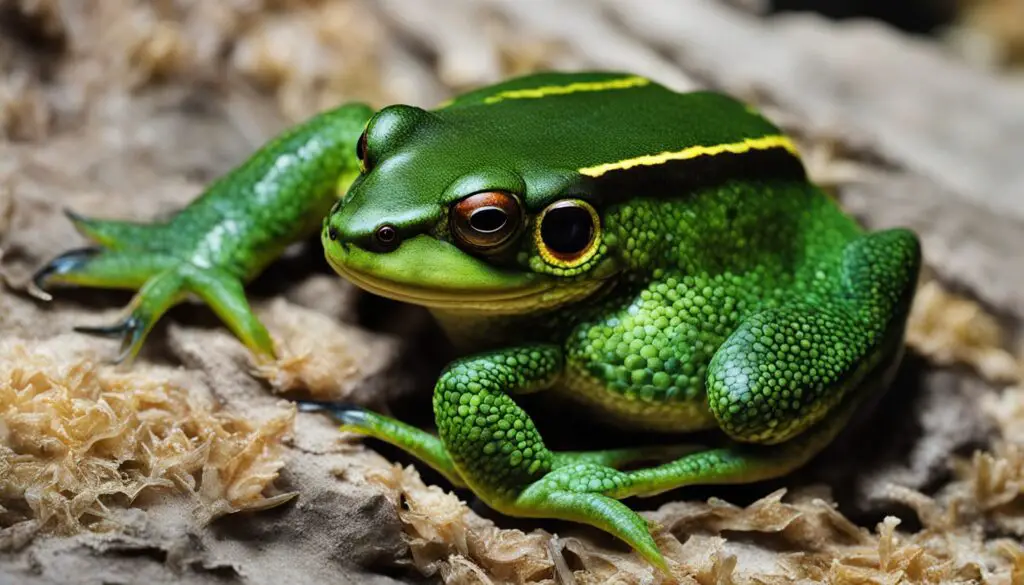
A special thing about Sirens in America is they can live in different water places. They come in many sizes and act differently. What’s unique is they keep their gills as they grow up, staying primarily in the water.
| Siren Species | Typical Habitat | Key Characteristics |
|---|---|---|
| Greater Siren (Siren lacertina) | Freshwater wetlands in the southeastern USA | Up to 38 inches in length, retaining larval gills |
| Lesser Siren (Siren intermedia) | Ponds and swamps in the southeastern USA | Smaller size, nocturnal habits |
| Reticulated Siren (Siren reticulata) | Floodplain swamps in Florida and Alabama | Newly identified species, distinguishable by reticulated pattern |
Sirens show us how healthy our environment is. They are important for scientists studying American nature. Learning about their adaptations helps us see their value in keeping waterplaces in balance.
Notable Amphibians in the USA
In the United States, the Greater Siren and the Axolotl are known for their unique traits and benefits to nature. They use interesting ways to live that have caught the eye of many. These creatures are admired by both scientists and nature lovers.
Greater Siren
The Greater Siren is like a big, eel-shaped salamander. It lives in the fresh waters of the southeastern USA. Unlike other salamanders, the Greater Siren does not have full limbs. It can reach up to 38 inches in length. These creatures can survive dry seasons by digging into mud and staying inactive. They do this to avoid dehydration. Despite their strange looks, they are well-known for being one of the most impressive amphibians in the USA.
Axolotl
The Axolotl is usually tied to Mexico. But, it’s also found in significant numbers in the USA, mainly for study and protection efforts. It’s nearly extinct. One major thing about the Axolotl is it can grow back lost limbs, as well as parts of its heart and brain. It remains in a youthful form its whole life. This trait is called neoteny. The Axolotl’s rare ability to regenerate and its unique appearance make it an important amphibian to the USA.
| Amphibian | Scientific Name | Unique Features | Habitat |
|---|---|---|---|
| Greater Siren | Siren lacertina | Estivation during drought, nocturnal | Southeast USA |
| Axolotl | Ambystoma mexicanum | Regenerative abilities, neoteny | Conservation areas in USA |
Endangered Amphibians in the USA
In the US, saving amphibians has become critical. Many face extinction due to habitat loss, pollution, and diseases. These threats are real and are causing their numbers to drop.
Some amphibians, like the Eastern Hellbender and the California Red-Legged Frog, are in great danger. Their homes are getting smaller and are becoming more polluted. Conservation groups and scientists are fighting back. They’re helping rebuild habitats, clean up pollution, and manage diseases. Their goal is to make the world safer for these animals.
It’s also up to us to help. Knowing the challenges these animals face is the first step. We can join local projects, support laws that protect nature, and live in ways that help the environment. This way, we can make sure these amazing animals stick around for future generations to see.

